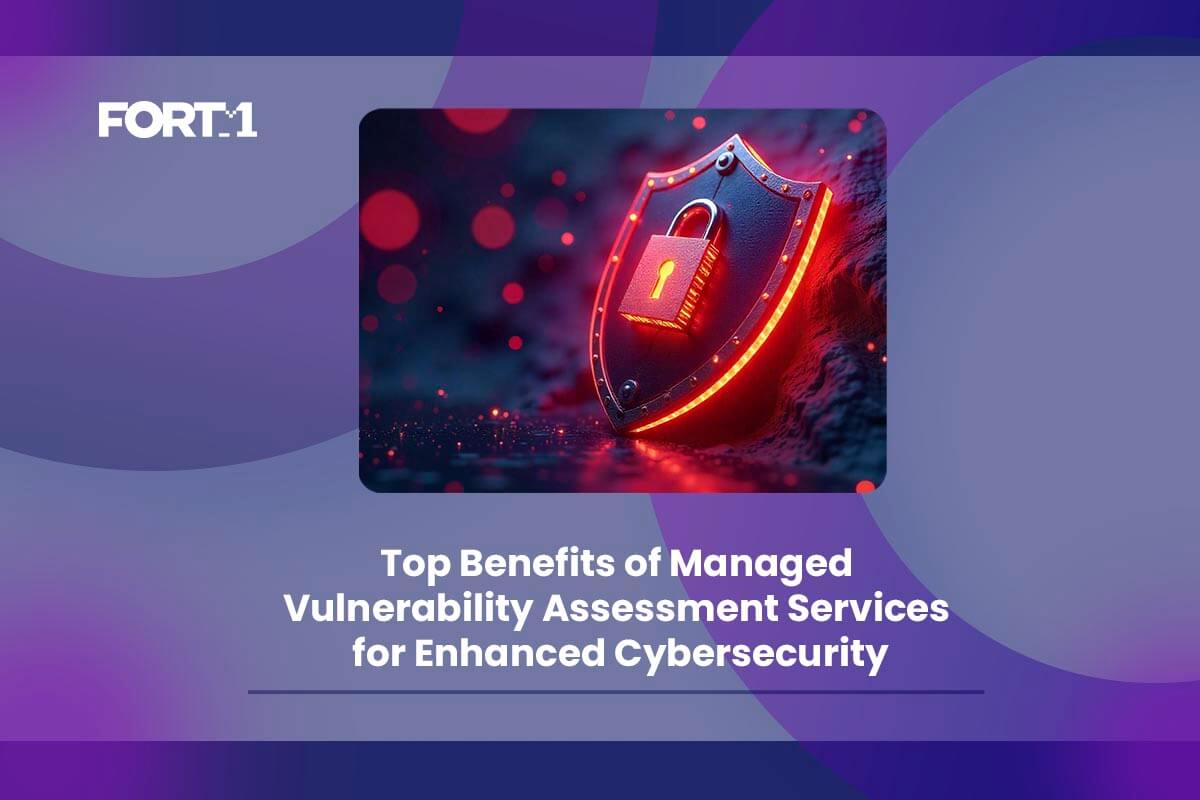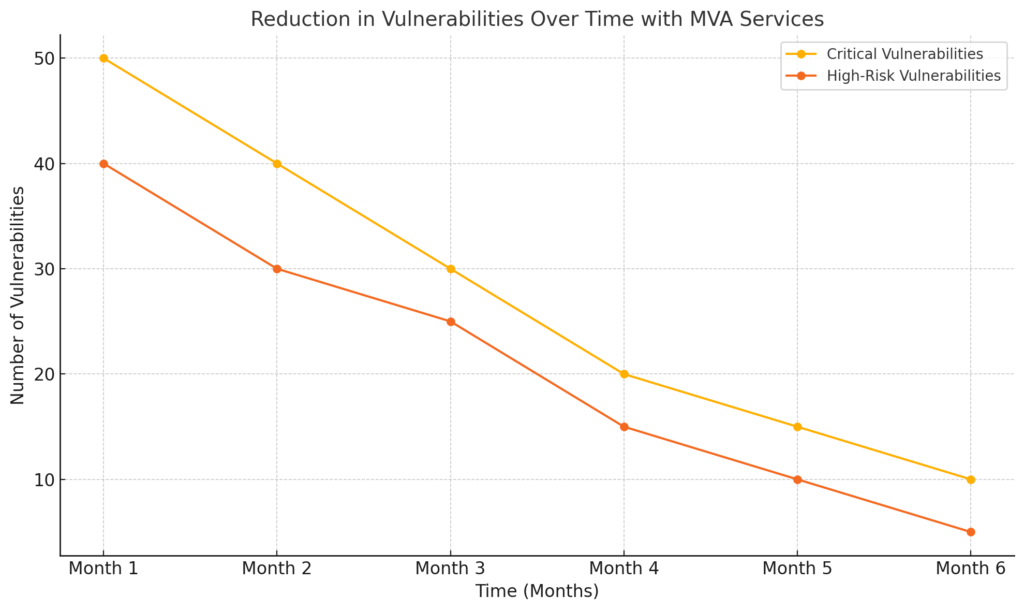




Cybersecurity breaches are a pressing concern, with Australia recording over $3 billion in reported cybercrime losses in 2023 according to the Australian Cyber Security Centre (ACSC). Managed Vulnerability Assessment (MVA) services have become an essential defence for businesses aiming to safeguard sensitive information and maintain operational integrity. These services systematically identify, assess, and prioritise vulnerabilities in IT systems, enabling organisations to address potential threats before they escalate.
As the frequency and sophistication of cyber-attacks grow, businesses of all sizes must adopt robust cybersecurity measures. MVA offers an efficient solution, providing continuous monitoring and expert analysis to enhance security posture. Australian businesses, particularly those handling critical data, benefit from MVA’s ability to ensure compliance with regulations such as the Privacy Act 1988 and the Notifiable Data Breaches scheme. By integrating MVA services, organisations can protect their assets, reduce risk exposure, and build resilience against evolving cyber threats.
Managed Vulnerability Assessment (MVA) is a systematic approach to identifying, analysing, and mitigating vulnerabilities within an organisation’s IT infrastructure. By leveraging both manual and automated techniques, MVA ensures that potential security weaknesses are not only detected but also prioritised for remediation based on their risk levels. This proactive methodology protects businesses from exploitation while enhancing their overall security framework.
At its core, MVA combines vulnerability scanning tools with expert analysis. Automated assessments quickly scan systems for known vulnerabilities, providing a broad overview, while manual assessments delve deeper into complex or context-specific issues that require human expertise. Together, these methods provide a comprehensive understanding of an organisation’s security posture.
MVA services seamlessly integrate with broader cybersecurity strategies, including incident response plans and regulatory compliance initiatives. For Australian businesses, this includes adherence to frameworks such as the Privacy Act 1988 and the Notifiable Data Breaches scheme. According to the Australian Cyber Security Centre (ACSC), continuous vulnerability management is crucial for maintaining resilience against ever-evolving threats.
By addressing vulnerabilities on a regular basis, MVA services empower organisations to reduce attack surfaces, enhance operational continuity, and achieve long-term security goals.
In an era where cyber-attacks are both frequent and sophisticated, businesses must adopt proactive cybersecurity measures to stay ahead. Managed Vulnerability Assessment (MVA) plays a pivotal role by identifying and mitigating vulnerabilities before they can be exploited. Through continuous monitoring and advanced vulnerability detection techniques, MVA ensures that potential security gaps are swiftly addressed.
Unlike reactive approaches that focus on damage control after a breach, MVA emphasises threat management by analysing vulnerabilities in real time. This allows businesses to implement timely patches or preventive measures, significantly reducing the risk of exploitation. For example, a study by the Australian Cyber Security Centre (ACSC) revealed that addressing known vulnerabilities could prevent nearly 85% of cyber-attacks. MVA not only enhances system resilience but also safeguards sensitive information, ensuring business continuity and customer trust.
Building and maintaining an in-house vulnerability assessment team can be a costly endeavour for many businesses, particularly small to medium enterprises. Managed Vulnerability Assessment (MVA) services offer a cost-effective alternative by outsourcing this critical function to experts, eliminating the need for expensive tools, infrastructure, and specialised staff.
MVA services reduce cybersecurity costs through economies of scale, allowing businesses to access advanced threat detection technologies without significant upfront investment. Additionally, outsourcing minimises the financial risk associated with a potential data breach, which can cost Australian businesses an average of $3.35 million per incident, according to the IBM Cost of a Data Breach Report. By streamlining vulnerability detection and remediation processes, MVA enables organisations to optimise their security budgets while maintaining robust protection against cyber threats.
Compliance with Australian cybersecurity regulations is a critical challenge for businesses, especially those handling sensitive customer or financial data. Managed Vulnerability Assessment (MVA) services help organisations meet these regulatory requirements by ensuring that vulnerabilities are promptly identified and mitigated.
Under frameworks such as the Privacy Act 1988 and the Notifiable Data Breaches scheme, Australian businesses must take reasonable steps to protect personal information and report breaches within 72 hours. MVA services provide detailed reports and risk prioritisation, enabling organisations to demonstrate compliance effectively. Moreover, regular assessments ensure that security measures align with evolving regulatory standards, minimising the risk of penalties or legal action.
The Australian Cyber Security Centre (ACSC) recommends ongoing vulnerability assessments as part of an effective cybersecurity strategy, emphasising their importance in achieving compliance while maintaining a strong security posture.
Effective risk management in cybersecurity begins with understanding and addressing vulnerabilities. Managed Vulnerability Assessment (MVA) services improve risk prioritisation by categorising vulnerabilities based on their severity and potential impact, ensuring that the most critical issues are addressed first.
MVA services also provide detailed vulnerability assessment reports tailored for various stakeholders, from IT teams to executive management. These reports offer actionable insights, including recommendations for remediation, timelines, and compliance requirements. By improving visibility into the organisation’s security posture, MVA empowers decision-makers to allocate resources effectively and minimise potential disruptions.
Comparing manual and managed assessments highlights the efficiency of MVA. While manual assessments may miss time-sensitive vulnerabilities, MVA ensures comprehensive and timely reporting. A comparison table below illustrates these differences:
| Aspect | Manual Vulnerability Assessment | Managed Vulnerability Assessment |
|---|---|---|
| Speed | Slow and periodic | Continuous and real-time |
| Coverage | Limited to specific assets | Comprehensive across all systems |
| Expertise | Dependent on in-house knowledge | Access to specialised experts |
| Cost | High upfront investment | Cost-effective subscription model |
| Reporting | Manual and inconsistent | Automated and detailed |
Selecting a Managed Vulnerability Assessment (MVA) provider is a critical decision that directly impacts your organisation’s cybersecurity posture. To ensure you partner with the right provider, consider the following criteria:
Choose a provider with demonstrated expertise in vulnerability assessment and a proven track record in delivering effective cybersecurity solutions. Providers with specialised knowledge of Australian businesses and compliance requirements offer significant advantages. The Gartner report on cybersecurity solutions is an excellent resource for evaluating globally recognised providers.
Ensure the provider can accommodate the growth and evolving needs of your organisation. A scalable MVA service can adapt to increasing system complexities, user demands, and regulatory changes without compromising on quality or performance.
Look for an MVA service that integrates seamlessly with your existing IT infrastructure and security tools. Effective integration reduces operational disruptions and ensures that vulnerability assessments complement other cybersecurity strategies, such as incident response and threat monitoring.
Compliance with local cybersecurity standards and regulations is essential. Verify that the provider adheres to frameworks such as the Privacy Act 1988 and the Notifiable Data Breaches scheme. The Australian Cyber Security Centre (ACSC) emphasises regular vulnerability assessments to maintain compliance and reduce risks.
The best MVA providers offer tailored reports that highlight vulnerabilities specific to your organisation and provide actionable recommendations. Additionally, assess their level of customer support, including response times and expertise.
By prioritising these criteria, businesses can identify top MVA services in Australia that align with their cybersecurity goals. A careful evaluation ensures your organisation benefits from a proactive, comprehensive, and scalable vulnerability management solution.
Managed Vulnerability Assessment (MVA) services have proven instrumental in enhancing cybersecurity resilience for numerous organisations. Here are two examples highlighting the real-world cybersecurity benefits of MVA:
A mid-sized Australian financial institution experienced recurring vulnerabilities in its online banking platform, risking sensitive customer data. By engaging an MVA provider, the institution identified critical flaws in its payment gateway and authentication systems. The proactive remediation process resulted in a 70% reduction in high-risk vulnerabilities within six months, significantly lowering the likelihood of data breaches. Additionally, the detailed reports provided by the MVA service enabled the organisation to meet compliance requirements under the Privacy Act 1988.
Reference: Australian Cyber Security Centre (ACSC) – relevance: highlights compliance success through regular vulnerability assessments.
A global retail chain operating in Australia faced challenges securing its e-commerce infrastructure against evolving threats. Using MVA, the company identified unpatched software in its payment processing systems. After implementing the MVA provider’s recommendations, the chain achieved a 90% improvement in patch management efficiency and reduced downtime by 50%. These improvements translated into enhanced customer trust and better regulatory compliance.
For instance, the graph could show a decline in critical and high-risk vulnerabilities over six months:

These case studies demonstrate how MVA services deliver tangible benefits, strengthening cybersecurity and ensuring operational continuity for businesses of all sizes.
Managed Vulnerability Assessment (MVA) services are an indispensable component of a robust cybersecurity strategy. By proactively identifying vulnerabilities, prioritising risks, and facilitating compliance with Australian standards, MVA empowers businesses to strengthen their security posture while minimising the likelihood of costly breaches. These services not only ensure operational continuity but also build long-term resilience against evolving cyber threats.
The importance of MVA lies in its ability to provide continuous assessment, enabling businesses to stay ahead of potential risks. With the growing complexity of cyber-attacks, organisations must adopt reliable cybersecurity solutions tailored to their unique needs. MVA delivers scalable, efficient, and comprehensive security enhancements that protect critical assets and sensitive information.
Take the first step towards enhanced cybersecurity today. Visit Fort1 to learn more about our managed vulnerability assessment services. Request a free consultation to discover how we can help safeguard your business.

Fort1 provides comprehensive cybersecurity solutions tailored to protect your business from evolving digital threats. With expertise in penetration testing, dark web monitoring, and managed detection services, we empower organisations to stay secure and resilient in the face of modern cyber challenges.
Copyright @2024 Fort1. All Rights Reserved by Fort1.